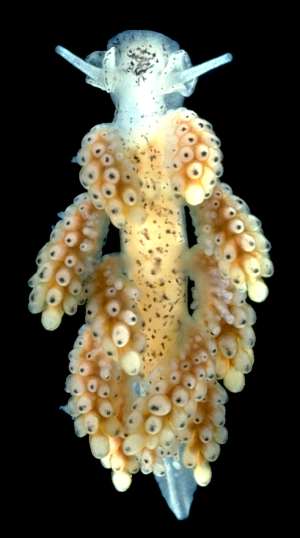
Doto ostentus
Burn, 1958
Order: NUDIBRANCHIA
Suborder: DENDRONOTINA
Family: Dotidae
DISTRIBUTION
Know from southeastern Australia - Victoria, Tasmania, New South Wales.
PHOTO
Upper & Lower right: Oak Park, Cronulla, Sydney, Australia, October 1990, AM C164096. Lower left: Callala Point, Jervis Bay, New South Wales, Australia, 20 November 1984. AM C144045. Photos: Bill Rudman
The body is translucent white usually tinged with yellow or a brownish yellow. There are usually diffuse black patches and marks on the body, head, and rhinophore sheaths. The cerata can be quite elongate with up to seven rows of rounded papillae. There is a black spot at the tip of each ceratal papillae. A branched gill can be present on the inside of each ceras [see lower right photo] It can grow to 15 mm in length. See Radula.
There are a number of similar species of Doto reported from the western Pacific such as Doto japonica Odhner, Doto bella Baba and Doto racemosa Risbec. Until they are revised, it is hard to say whether Doto ostentus is endemic to southeastern Australia or just a population of a more widespread species.
-
Burn, R. F. (1958) Further Victorian Opisthobranchia. Journal of the Malacological Society of Australia, 2, 20-36.
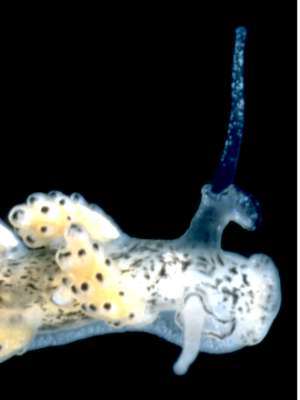
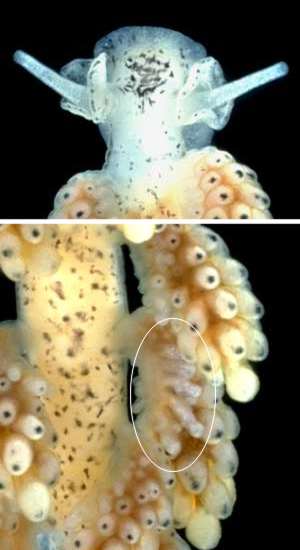
Rudman, W.B., 2008 (November 22) Doto ostentus Burn, 1958. [In] Sea Slug Forum. Australian Museum, Sydney. Available from http://www.seaslugforum.net/find/dotooste
Related messages
Re: Doto from New Zealand [2]
November 24, 2008
From: Nick Missenden
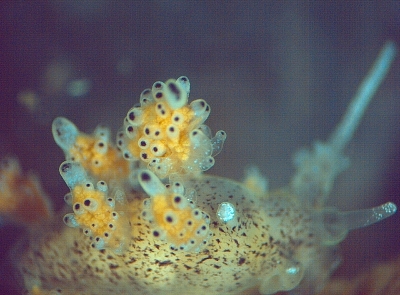
Concerning message #22055:
As a follow up to my previous message I have now found colonies on my last four dives at Bare Island in four separate sites. This was on the east side of the island in three separate locations and also on the west reef of Bare Island. I have also added a couple more pictures including a close up of the lobed cerata. I had originally taken some of them mating but they didn't come out so working on taking more to get some decent pictures. Also I'll include the egg ribbon in the next set of pictures.
Locality: Bare Island, 11 m, NSW, Australia, Botany Bay, 21 November 2008, Broken reef, sandy bottom. Length: 15 mm. Photographer: Nicholas Missenden.
Kindest Regards
Nick
njmpm@iinet.net.au
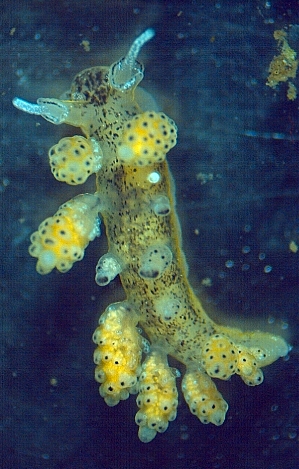
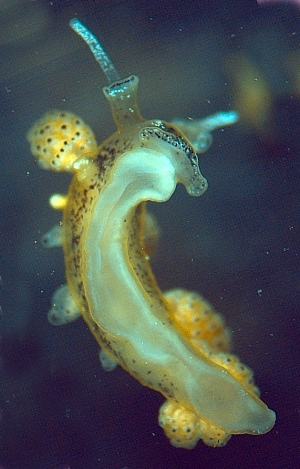
Dear Nick,
It's good to get some more photos of this species 'doing things'. These photos show quite a variation in the size and development of the cerata on the back. Species of Doto can cast off their cerata at the slightest provocation [see autotomy], as a defensice strategy much in the same way some lizards drop their tails. They begin to grow back almost immediately, but as they are regrowing the animal has an assortment of different sized cerata.
Best wishes,
Bill Rudman
Re: Doto from New Zealand
November 24, 2008
From: Nicholas Missenden
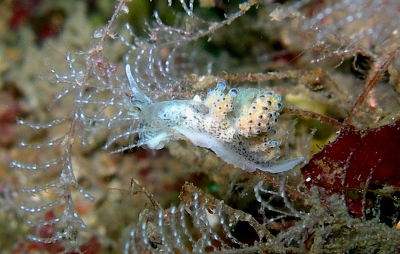
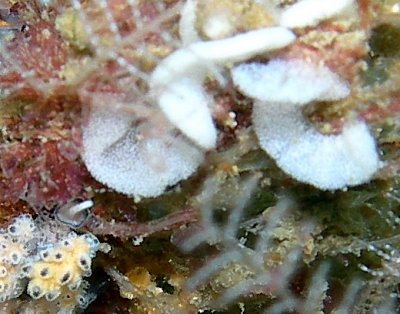
Concerning message #5822:
Hello Bill,
Im very excited at a recent discovery of mine at Bare Island, La Perouse. Sydney. I have been looking for any species of Doto in this area as I haven't seen any reports of them here before. Finally after a long time searching I have found what I think is a Doto sp and from extensive searches it appears that its undescribed, woohoo!!! It seems that this Doto that was sent in by Gareth Jones in 2001 is the closest I have come in finding a match however the rhinophores in the specimen pictured are totally black and the ones that im sending in are clear. I am trying to obtain more detailed and clearer pictures along with other observations. It is definatley associated with the hydroid pictured as i found the same species a couple of months ago in a different area of the island but when i was diving without a camera. Im very interested in doing further study of this species and if there is anything in particular that i could do in order to have it properly identified please let me know. I have included a photograph with a Doto and a white egg ribbon. Both times that I have found these nudibranchs was in the presence of the same egg ribbons. On this particular dive I found four seperate clusters of Doto on their hydroid colony and each cluster contained several white egg ribbons. Although I havent seen them laying yet I believe them to be from the Doto sp. I will endeavour to capture this on camera to add to the data base.
I am very keen to be involved in the study of this species and I believe it to be endemic to this area considering the different areas where I have found it and on separate occassions spanning months.
Locality: Bare Island, La Perouse, Sydney, 18 m, NSW, Australia, Botany Bay, 14 November 2008, Broken reef,. Length: 20 mm. Photographer: Nicholas Missenden.
Hope to hear from you soon.
Kindest Regards
Nick Missenden
njmpm@iinet.net.au
Missenden, N, 2008 (Nov 24) Re: Doto from New Zealand. [Message in] Sea Slug Forum. Australian Museum, Sydney. Available from http://www.seaslugforum.net/find/22055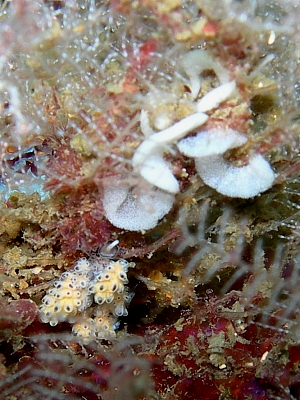
Dear Nick,
This is Doto ostentus. When I got your message I wondered what had happened to the Fact Sheet for that species, because it is the 'common' Doto in New South Wales. When I looked I found a half-finished Fact Sheet dating from 6 years ago, so my apologies for raisng your hopes of a 'new discovery'. It is possible that this species, which was named from southeastern Australia 50 years ago, is the same as one of the other black-spotted species of Doto reported from the Indo-West Pacific but we need to learn more about those other species before we can be sure. The animal from New Zealand that your refer to seems to differ in having bllack rhinophores.
Best wishes,
Bill Rudman
